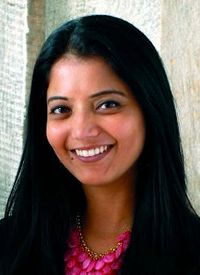Article
Novel CAR T-Cell Approaches Emerging in Multiple Myeloma
Author(s):
Deepu Madduri, MD, discusses ongoing trials examining CAR T-cell therapy in myeloma and the potential to use it in earlier lines of therapy.

Deepu Madduri, MD
CAR T-cell therapy has the potential to have a greater benefit in multiple myeloma if it is administered earlier in the treatment course, explained Deepu Madduri, MD, adding that there are other novel strategies on the horizon.
“Soon we're going to see what happens to CAR T-cell therapy as it moves up earlier and earlier in the treatment lines,” said Madduri, an assistant professor of hematology and medical oncology at Mount Sinai Hospital.
Several ongoing studies are examining the most effective ways to utilize CAR T-cell therapy in patients with multiple myeloma. Currently, patients who are eligible to enroll on CAR T-cell therapy trials must fail on a proteasome inhibitor (PI), immunomodulatory (IMiD) agent, and a CD38-directed monoclonal antibody, Madduri said.
For example, the ongoing phase I CRB-401 study is examining the BCMA-targeted CAR T-cell product bb2121 in patients who previously received ≥3 lines of therapy. Updated findings of the trial showed that the overall response rate (ORR) was 85% and the median progression-free survival (PFS) was 11.8 months (95% CI, 6.2-17.8).
Moreover, the most common grade ≥3 adverse events were hematologic and included neutropenia (85%), leukopenia (58%), anemia (45%), and thrombocytopenia (45%). Twenty-five patients (76%) had cytokine release syndrome, which was mostly grade 1/2 (n = 23; 70%), with 2 (6%) patients experiencing grade 3.
In an interview during the 2019 OncLive® State of Science Summit™ on Multiple Myeloma, Madduri discussed ongoing trials examining CAR T-cell therapy in myeloma and the potential to use it in earlier lines of therapy.
OncLive: Could you highlight some clinical trials that are exploring CAR T-cell therapy in myeloma?
Madduri: The trial [looking at bb2121] is a dose-escalation study that started at 50 million CAR T cells, to 450 million, and even went up to 800 million. It was just published in the New England Journal of Medicine; the newest data showed a PFS of about 11.8 months.
How would you describe the potential impact of CAR T-cell therapy in this field?
The key takeaway is that there is quite a lot of CAR T-cell therapies and most of them have BCMA [as a target]. It's really important to wait for the data to come out of these trials because, right now, they all exclude the other when it comes to BCMA. Therefore, if you're giving a BCMA bispecific monoclonal antibody, you can't then give bispecific CAR T-cell therapy and vice versa. It will be interesting to see what patients are chosen to participate in these studies. There is also a lot of ongoing research regarding CAR T-cell resistance, persistence, and relapse.
Every year, we are starting to get newer therapies approved. Selinexor (Xpovio) recently got approved. Now, the CRB-401 trial has completed enrollment and the developer will probably go to the FDA [with an application] early next year.
We're going to start having commercially available CAR T-cell therapies, which is going to change the treatment paradigm very quickly because a lot of patients want CAR T-cell therapy. We want to see if patients who fail the BCMA bispecific monoclonal antibody will then receive this expensive [CAR T-cell] therapy in this real-world setting—and if it is going to work or not.
What is the optimal patient population to receive CAR T-cell therapy, and do we have any biomarkers to predict benefit?
Right now, most of the trials require patients to have previously received a PI, IMiD agent, and a CD38-directed monoclonal antibody. If you've failed all 3 of those, you're eligible for these [types of] studies. CAR T cells are being [looked at in] earlier lines of treatment. We're trying to use it upfront to see what the advantages could be. Plus, there's KarMMa-3, which is a randomized study with a daratumumab- [or ixazomib-]based regimen versus CAR T-cell therapy. Another trial that is in the process of being written will look at CAR T-cell therapy as consolidation after transplant. That will be very interesting to see. Could you use CAR T-cell therapy as consolidation? Could you use it after one line of therapy? Will a patient have a longer PFS than someone who has failed 3 or 5 lines of therapy?
What other pivotal studies are you looking forward to seeing the results of?
Thus far, we've heard a lot about bb2121, bb21217, and JCARH125, but we haven't heard anything from the phase Ib Janssen trial [of JNJ-68284528] that they acquired from China. We have heard information from LEGEND-2, but we have not heard [about the study] being conducted in the United States. We're hoping to hear the data come out at either the 2019 ASH Annual Meeting or in early 2020. That will be exciting to see as another competitor how the data are going to turn out.
Raje N, Berdeja J, Lin Y, et al. Anti-BCMA CAR T-cell therapy bb2121 in relapsed or refractory multiple myeloma. N Engl J Med. 2019;380:1726-1737. doi: 10.1056/NEJMoa1817226.
 






%20(2)%201-Recovered-Recovered-Recovered-Recovered-Recovered.jpg?fit=crop&auto=format)

%20(2)%201-Recovered-Recovered-Recovered-Recovered-Recovered.jpg?fit=crop&auto=format)
%20(2)%201-Recovered-Recovered-Recovered-Recovered-Recovered.jpg?fit=crop&auto=format)